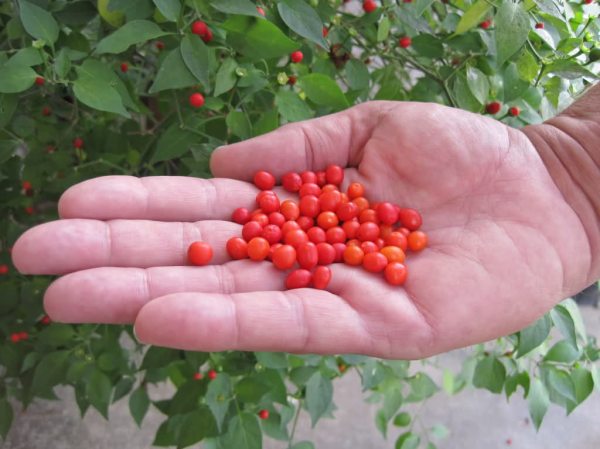Human beings have been plagued with joint pain throughout the history of mankind. Arthritis, the condition caused by the wearing down of beneficial cartilage in the joints, affects over 27 million people in the United States today, according to the Arthritis Foundation
(www.arthritistoday.org). I don’t know enough about the skeletal evidence from the Lower Pecos of Texas to do more than speculate, but at least some people in the region 4000-6000 years ago must have worn out a knee or two climbing up and down steep canyons and running over rough stone outcroppings in the uplands. In other words, they probably had their share of “archaic arthritis.”
Ow! Even that phrase hurts! Osteoarthritis produces stinging pain and can cause swelling and stiffness in the joints affected. Generally, the older you are, the more wear and tear you have on your joints. A stiff knee could make a thirty-year-old adult from the archaic period feel old before his or her time. But somebody had to hunt, somebody had to gather plants. It’s not like they could just stay at home with their feet up. So what did they do?
Recently I was forced to experiment to find out. I had to forego my usual arthritis medication from the doctor, and researched various herbal remedies. I decided to try cayenne capsules, devil’s claw root extract, and yucca root extract to alieve my own symptoms because native varieties of these were likely available during the archaic period in the Lower Pecos.
The “hotness” of chili peppers is measured in Scoville units. Cayenne is measured at between 30,000 and 50,000 Scoville units, but our native chiltepine pepper comes in at a whopping 50,000-100,000 Scoville units! The “heat” is caused by capsaicin, which is present in all hot peppers to some extent. capsaicin is a main ingredient of various topical creams available today to treat arthritis. Some sources suggest rubbing the cream on the affected areas four times a day for best results. Capsaicin seems to work by interfering with the perception of pain (aside from burning tongues!)
While cayenne does not grow wild in west Texas, chiltepines should. I recently asked four people who know the land and plants in that area intimately (ranchers, archeologists, botanist), however, and they could not recall seeing a wild chiltepine plant in recent years. So, even though the plant should be well suited to the area, there must be some reason why they are not currently in evidence. At any rate, IF they were there during the archaic period, it is likely the people would have utilized the small peppers for flavoring and medicinal purposes. One way they might have used the little chilis would be to apply crushed pods to swollen joints, perhaps mixed in a plaster of some sort. Another way might be to drink the crushed peppers as a tea, although that would burn the mouth.
Another plant the ancient people likely exploited is Devil’s Claw (Proboscidea parviflora), which grows in dry places throughout the American Southwest. The dry seed pods which give the name to the plant were used by the Pima Indians in basketry and well as for medicine. They broke off a piece of the claw and pressed it onto the affected area. Then the claw must be lit on fire and allowed to burn down. Ouch!
Another variety called Harpagophytum procumbens has been studied for effectiveness. The journal Phytomedicine (2002) reported a study of 227 people treated with Devil’s Claw extract for eight weeks. They each took 60 mg of the extract daily, and at the end of the study, about 60% reported decreased pain and increased mobility and flexibility. People are cautioned not to take this if they are pregnant, have gallstones or ulcers, or are taking antacids or blood thinners (see http://www.arthritistoday.org).
Yucca root is also known to have been used by Native Americans to alieve joint pain, among other things. The root has anti-inflammatory properties, but little reasearch has been done to support effectiveness (see http://www.livestrong.com). I can say from the experience of taking four tablets of yucca root a day in addition to Devil’s Claw extract and cayenne capsules, that the combination reduced the stinging pain in my wrists and I had more flexibility in my knees.
The last plant in my Lower Pecos pharmacy for joint pain is stinging nettle (Urtica dioica).
As the name implies, contact with the leaves, or little tiny hairs on the leaves, can be rudely painful. The leaves and stems are widely used in Germany, however, to make a tea for both rheumatoid arthritis and osteoarthritis. A small study from the University of Maryland was inconclusive regarding the anti-inflammatory compounds in stinging nettle as a topical cream.
As you can see, people living in that beautiful region we call the Lower Pecos, between the Pecos, Devil’s and Rio Grande rivers in south Texas, could have used several natural pain relievers to help keep their joints moving 4000-6000 years ago. I wish I knew their medicinal recipes…
Related articles
- Health Benefits of Cayenne Pepper (earthnutrients.wordpress.com)
- The World’s 7 Hottest Peppers (Please don’t try this at home) (friendseat.com)







think of how zesty their salsa could have been using those chilipitines!!
Mary– your posts are very interesting and take me “right ” to that part of TX . Thanks and I’ve forwarded this to a friend with pain. Best, Jan
Sent from my iPad
Pingback: Devil’s Claw | Find Me A Cure